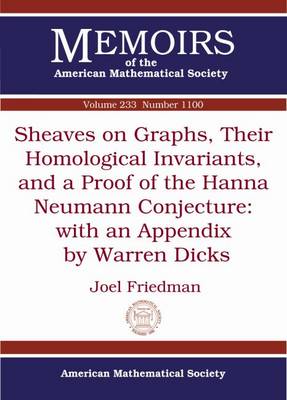Memoirs of the American Mathematical Society
2 total works
Sheaves on Graphs, Their Homological Invariants, and a Proof of the Hanna Neumann Conjecture
by Joel Friedman
Published 30 January 2015
In this paper the author establishes some foundations regarding sheaves of vector spaces on graphs and their invariants, such as homology groups and their limits. He then uses these ideas to prove the Hanna Neumann Conjecture of the 1950s; in fact, he proves a strengthened form of the conjecture.
A Proof of Alon's Second Eigenvalue Conjecture and Related Problems
by Joel Friedman
Published 1 January 2008
A $d$-regular graph has largest or first (adjacency matrix) eigenvalue $\lambda 1=d$. Consider for an even $d\ge 4$, a random $d$-regular graph model formed from $d/2$ uniform, independent permutations on $\{1,\ldots,n\}$. The author shows that for any $\epsilon>0$ all eigenvalues aside from $\lambda 1=d$ are bounded by $2\sqrt{d-1}\;+\epsilon$ with probability $1-O(n{-\tau})$, where $\tau=\lceil \bigl(\sqrt{d-1}\;+1\bigr)/2 \rceil-1$. He also shows that this probability is at most $1-c/n{\tau'}$, for a constant $c$ and a $\tau'$ that is either $\tau$ or $\tau+1$ (""more often"" $\tau$ than $\tau+1$). He proves related theorems for other models of random graphs, including models with $d$ odd.

